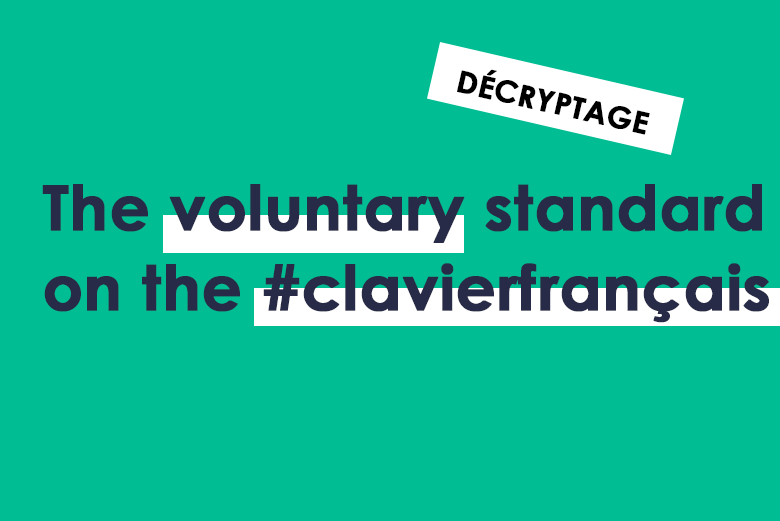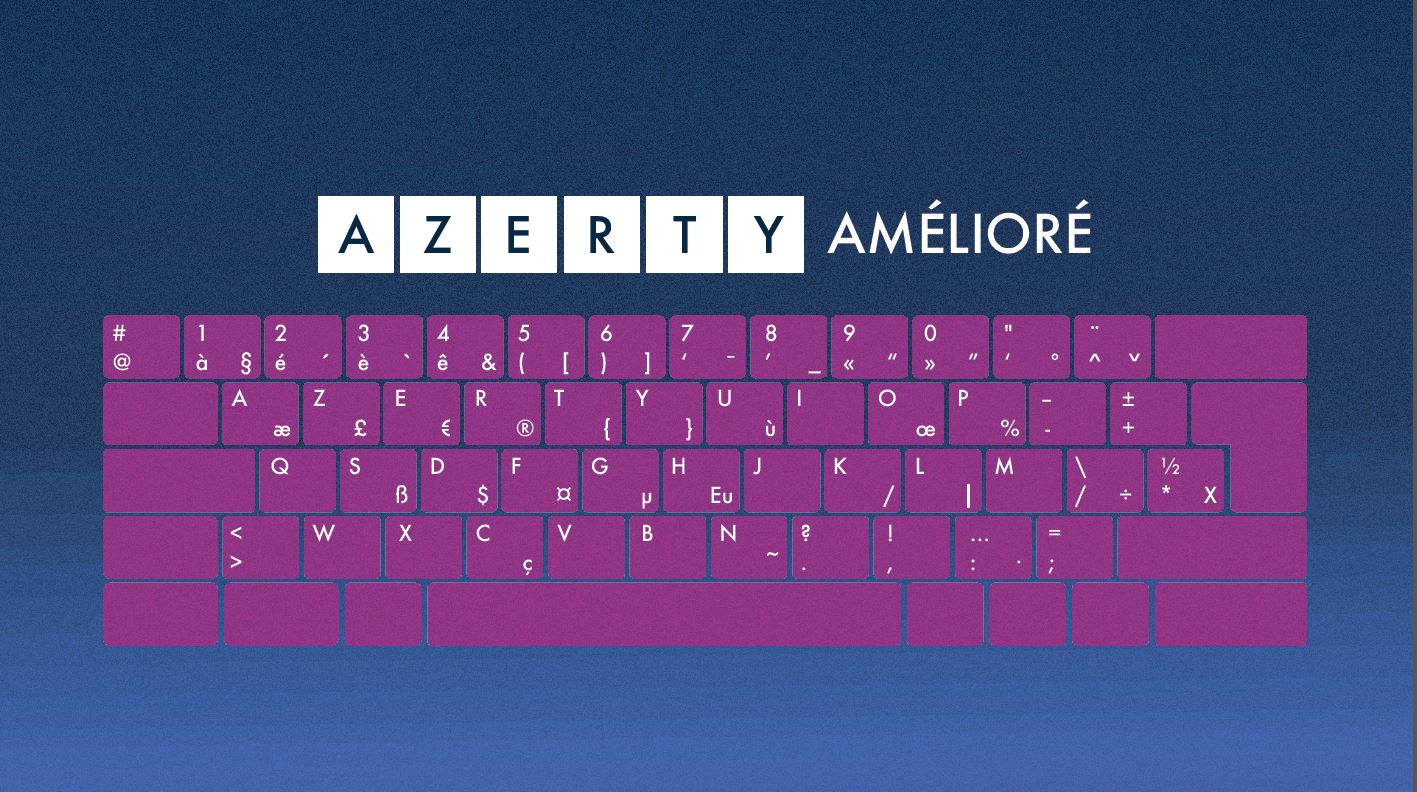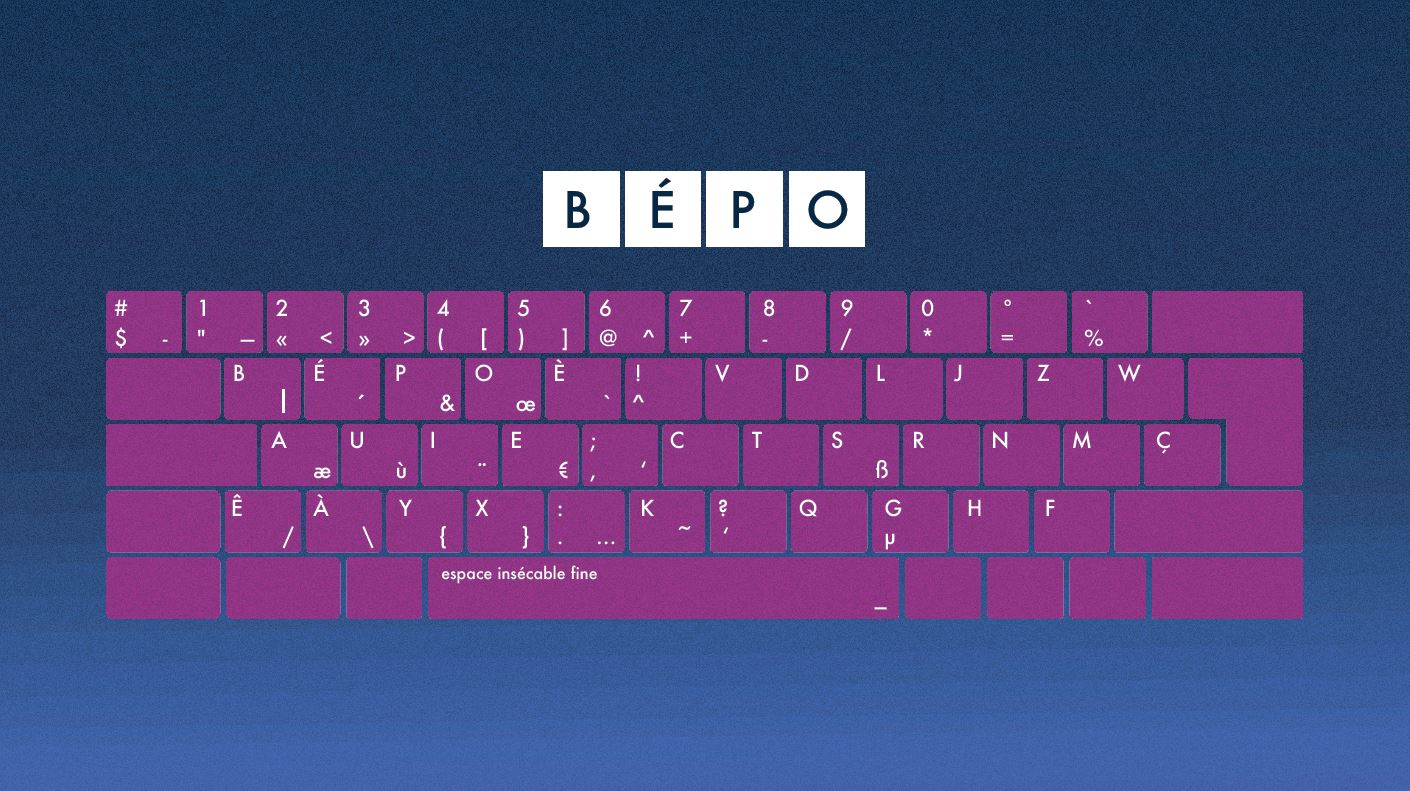French keyboard: a voluntary standard to make it easier to enter all characters

Have you ever tried to type the characters “æ”, “œ” or – worse – their capitalized equivalents, on a conventional “azerty” keyboard? That’s sport! Voluntary standard NF Z71-300 proposes a new keyboard layout to facilitate text entry in French.
> Buy the Z71-300 voluntary standard…
> Download the file for the presentation of the standard at the Ministry of Culture on April 2, 2019…
AFNOR has published the voluntary standard NF Z71-300, proposing a new character layout for computer keyboard keys, to make it easier to enter text in French, from a regional language or extracted from another European language with a Latin alphabet. Deciphered in 11 questions and answers.
6. Do we now need to change keyboards? Are older keyboards obsolete?
1. Who decided it was time to design a new keyboard?
The French Ministry of Culture, and more specifically the Délégation générale à la langue française et aux langues de France (DGLFLF), approached AFNOR in 2015 to initiate a project for a standard on the French keyboard. Every year, thousands of representatives of organizations (companies, consumer associations, trade unions, ministries) make a commitment via AFNOR to ensure that voluntary standards provide solutions to problems specific to their industry, their profession and their products.
2. Why evolve the keyboards we know?
Current “azerty” models do not allow accented characters to be written in uppercase, nor do they allow “double chevrons” to be used. “These are the two French ligatures “æ” (e in a) and “œ” (e in o) and their capitalized equivalents “Æ” and “Œ”, to name but the most recurrent. The standard therefore aims to make it easier for users to write, without necessarily having to use licensed software that compensates for these flaws.
Its aim is to improve keyboard ergonomics and make it easier to enter French, regional languages and all the characters of the Latin alphabet languages present on the European continent (with priority given to the usual characters of the major languages of communication in Europe, such as German, Spanish and Portuguese).
3. What exactly does NF ZF1-300 say?
The members of the standardization committee wanted to offer two keyboard models that offer the same writing capabilities, while meeting different needs. The first is an optimized azerty model, a kind of azerty 2.0 keyboard. The 26 letters of the alphabet and the numbers remain unchanged from the main “azerty” models, unlike certain other characters such as accented vowels, the arobase, punctuation, the hash (hashtag), currency symbols and braces…. Evolutions are therefore easy to integrate for interested users.

The second model proposed by the standard, known as the “bepo” model, is already known by a community of enthusiasts. Created in 2003, this model is referenced in the voluntary standard in an optimized version that allows even more accents of European languages of Latin origin, or single quotation marks, for example, to be entered via the dead keys. The “bepo” model is now recognized as offering the most ergonomic and efficient layout possible for typing French and other European languages based on the Latin alphabet, as well as for programming. Inspired by the English Dvorak layout, “bepo” is available under a free license on many operating systems.

4. Why the standard offers two keyboard models: improved “azerty” and “bepo
The standards committee behind the voluntary standard brought together very different opinions on the desirability of defining a new French keyboard model. There was both a very strong demand to change nothing and an equally strong contradictory demand to change everything. That’s why the members of the committee wanted to offer these two models, which offer the same writing possibilities, but are designed for different uses. Keyboard manufacturers can therefore choose to offer an improved “azerty” model and/or a “bepo” model.
5. What are the benefits of this standard?
The aim is to limit current typing difficulties such as those mentioned in question 2: use of accented characters, especially accented capital letters, use of “double chevrons”, etc. “The use of the two French ligatures “æ” (e in a) and “œ” (e in o) and their capitalized equivalents “Æ” and “Œ”… The aim of the standard is to propose solutions to make it easier to write French using a keyboard marketed in France.
6. Do we now need to change keyboards? Are older keyboards obsolete?
Not at all. Fortunately, consumers can keep their current keyboards if they wish. They are still functional. Consumers can also buy new keyboards optimized to the standard, if they want to make typing and writing easier in French, regional languages and Latin languages.
7. Is this standard mandatory?
The French keyboard standard, like 99% of voluntary standards, is in no way mandatory. It does not oblige anyone to do anything. It is a voluntary document. Keyboard manufacturers may decide to comply with these standards to produce new keyboard models if this market represents an interest for their development. Nevertheless, companies and public authorities can decide to equip their employees or agents with optimized keyboards, and thus make this document a condition for responding to a call for tenders.
8. How much will it cost me to change my keyboard?
Compliance with the standard entails no additional costs for the manufacturer, apart from those associated with adapting the production line to engrave the keys or adapt the driver software. If we look at the prices of conventional keyboards, we can assume that standardized keyboards will be marketed in the same price range, i.e. between 5 and 20 euros for basic models.
9. Where can I find these new keyboards?
As the standard was published at the beginning of April 2019, we need to give manufacturers time to get to grips with it and decide whether or not to adopt it and then offer new, optimized keyboards. Interested consumers can also take the initiative and contact keyboard and computer manufacturers to let them know what they want.
10. How and by whom was this standard developed?
The NF Z71-300 standard was written in a collegial manner, by the members of a commission whose list is public. Keyboard manufacturers, IT companies, associations, ministries… This commission, like all AFNOR commissions, was open to all those who wished to take part in the project. Voluntary standards are co-written by interested parties: it’s the market players who write them, not AFNOR, whose role is to lead this work, respecting consensus and the general interest.
Scientists were also involved in the project: the optimized “azerty” keyboard layout was designed on the basis of statistical projections carried out by researchers in Human-Computer Interaction (HCI) at Aalto University (Finland), who have recognized expertise in optimizing input interfaces, particularly keyboards. Researchers from Inria Lille – Nord Europe, the Max Planck Institute for Informatics (Germany) and ETH Zurich (Switzerland) also offered their help. Their contribution was to design a system for evaluating and designing optimal keyboard layouts, according to constraints established (and frequently adjusted) by the experts on the standards committee. Machines have calculated the optimum location for the new characters to be added, based on huge corpora of French text supplied by ELRA (European Language Resources Association).
Fans of the “bepo” model contributed to the project by sharing 15 years of feedback. The inclusion in the standard of the “bepo” model, optimized at the very margins as part of the project, is therefore a recognition of the validity of the input practices enabled by this type of keyboard.
A public survey was carried out in June 2017: the draft voluntary standard was made public and open to comments from all. Over 3,000 comments were received and taken into account by the standards committee. There has been much debate in the media and on social networks about #clavierfrançais. The numerous comments received resulted in a substantial workload, leading to several postponements of publication of the final document. Consequently, publication could only take place once consensus had been reached between all the members of the standards committee.
11. Is this standard useful in the age of virtual keyboards?
Indeed, the rapid development of mobile and touch terminals is leading to massive use of so-called “virtual” keyboards, i.e. keyboards that have no physical existence but can be displayed on a screen, for example. France is also working on a draft international standard for virtual keyboard interfaces, one of whose recommendations would be to follow, for each country, the usual layout of physical alphabetic keyboards, where possible.
Nevertheless, virtual keyboards are far from replacing “classic” office keyboards: in the professional world, most corporate employees and civil servants use a computer with a keyboard on a daily basis, and this situation is unlikely to change much over the next few years. This is, of course, very different in the personal sphere, where mobile devices are gradually replacing the home computer.